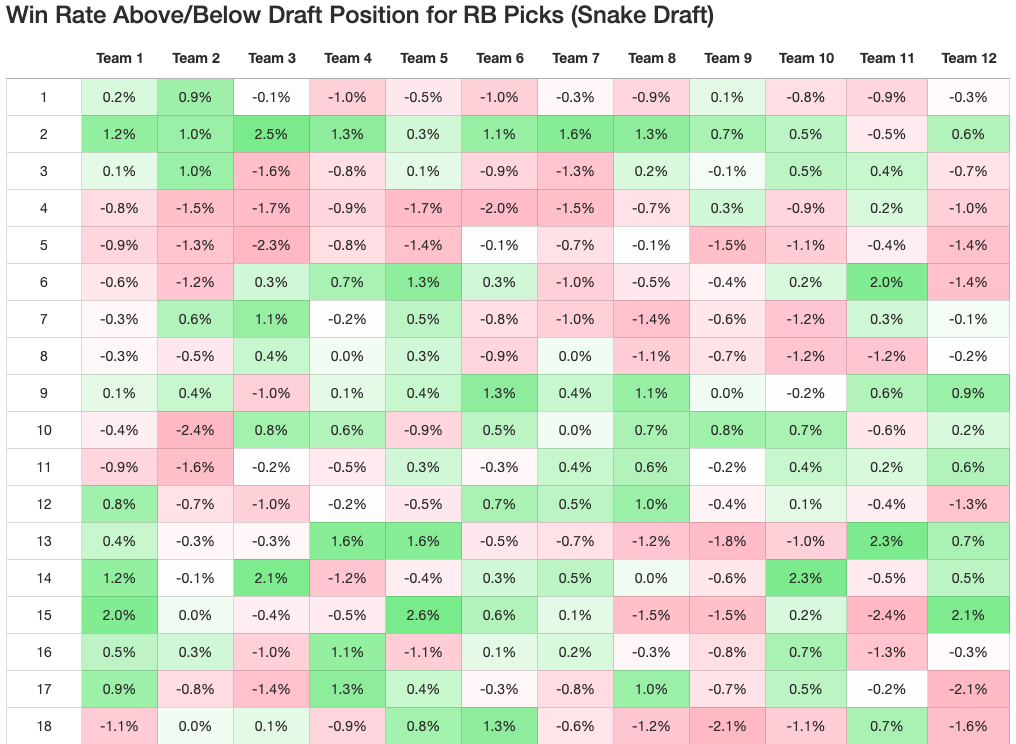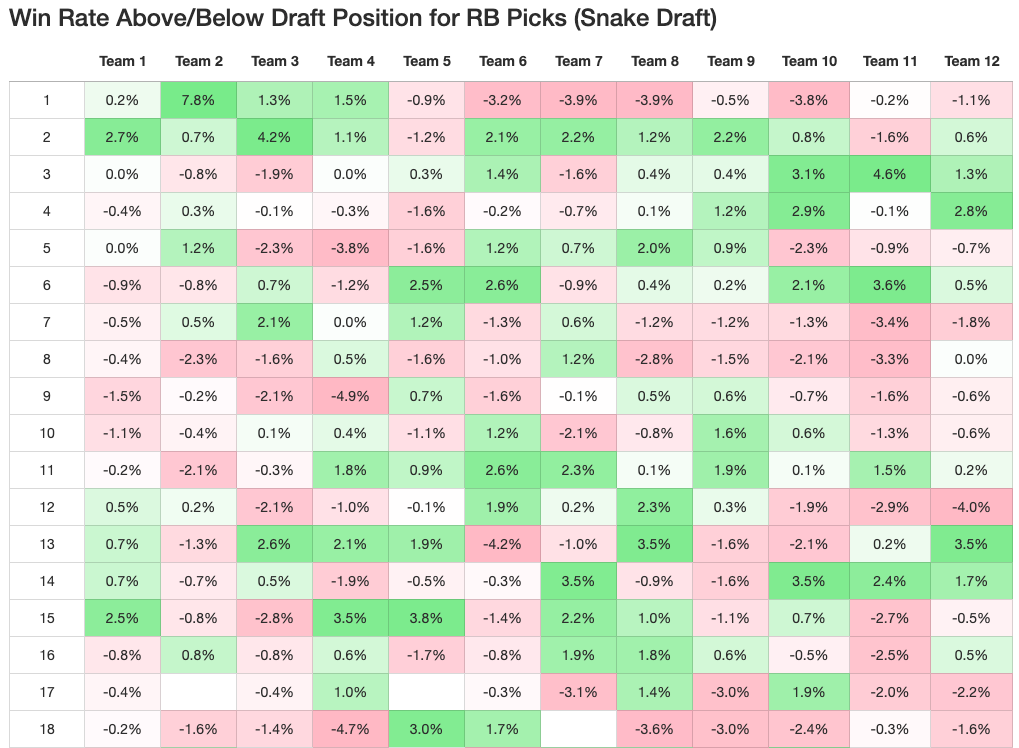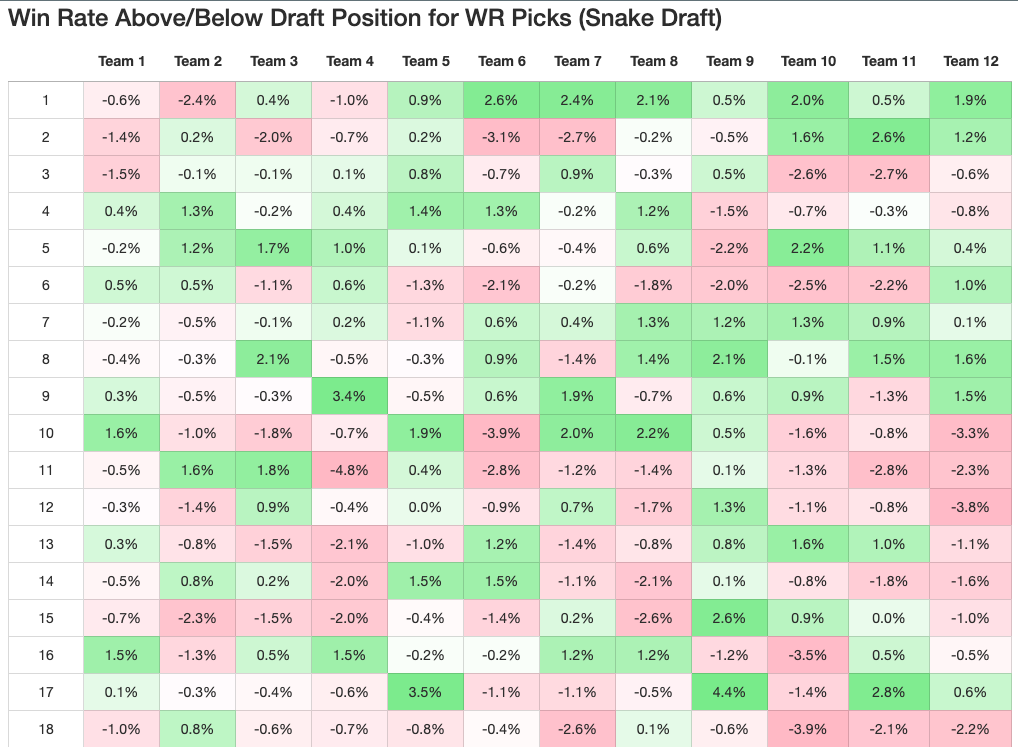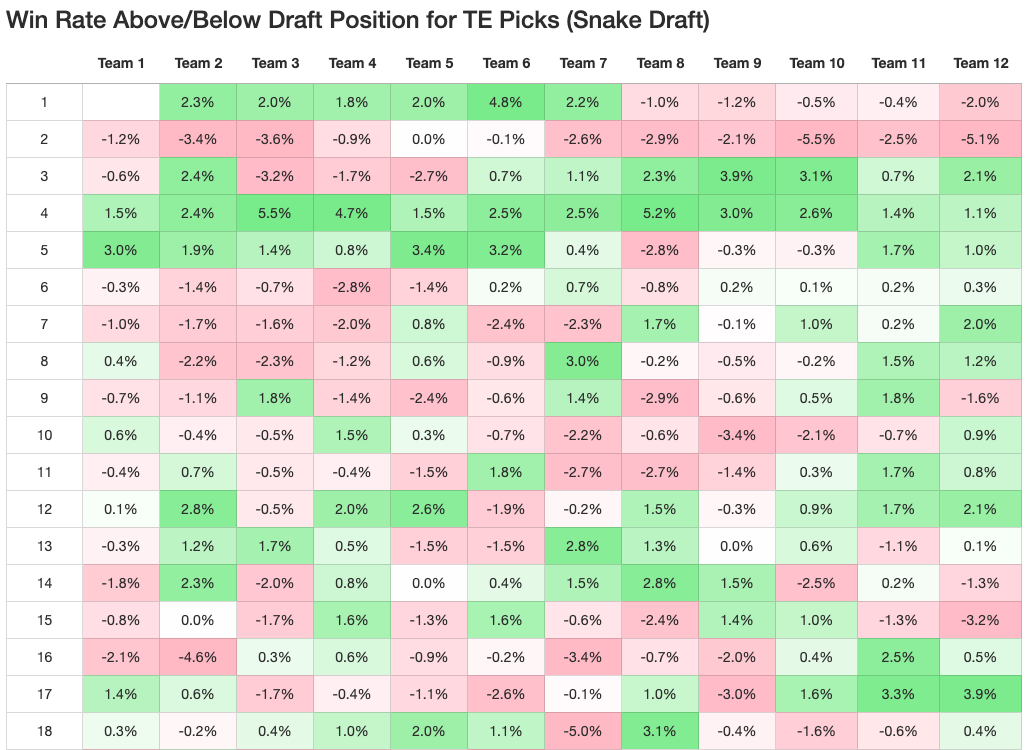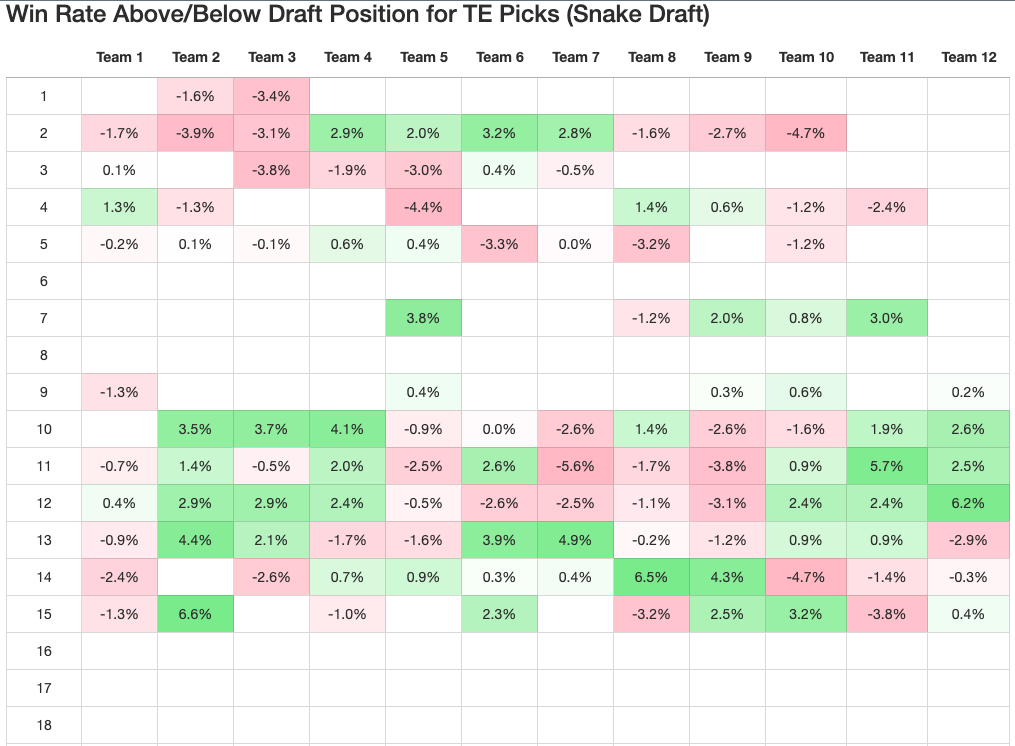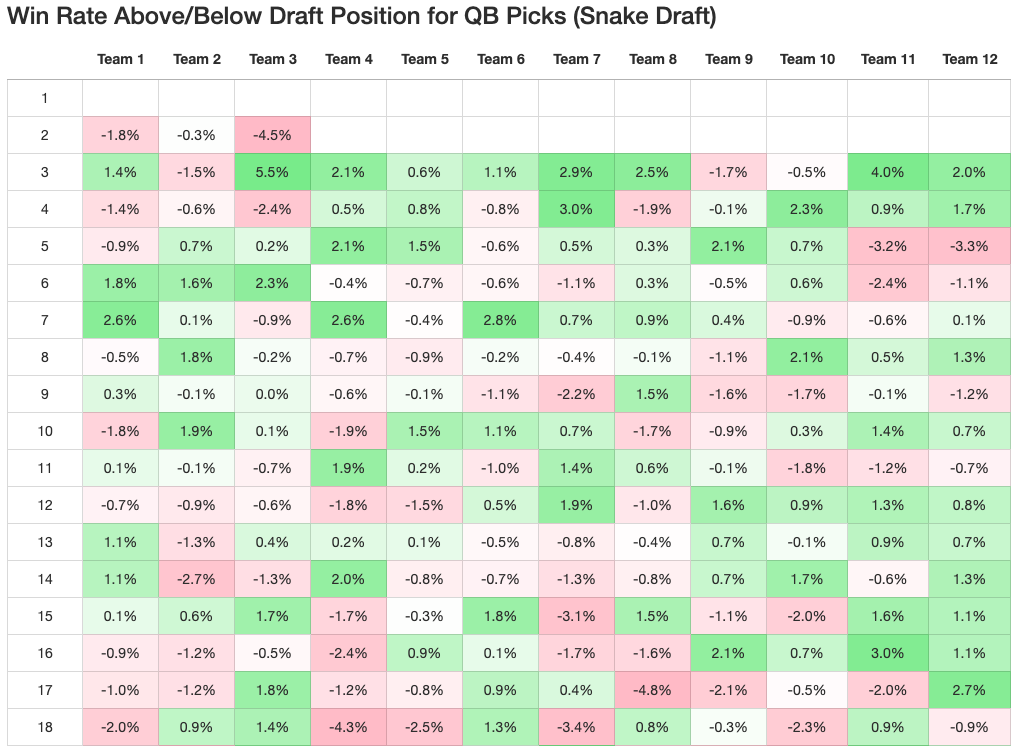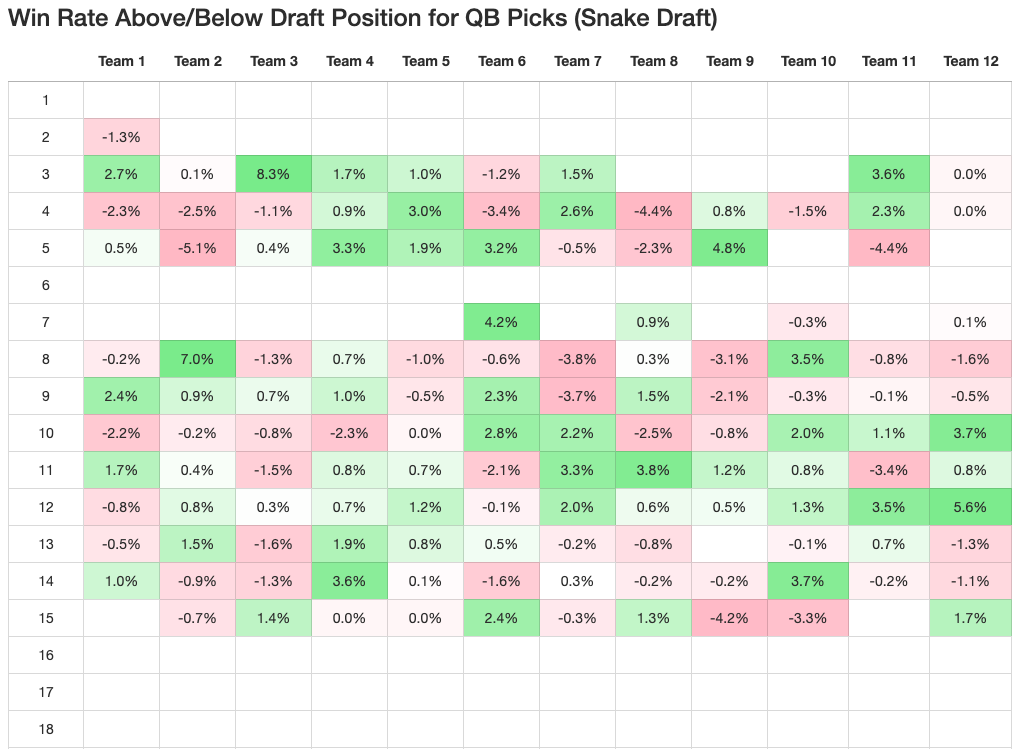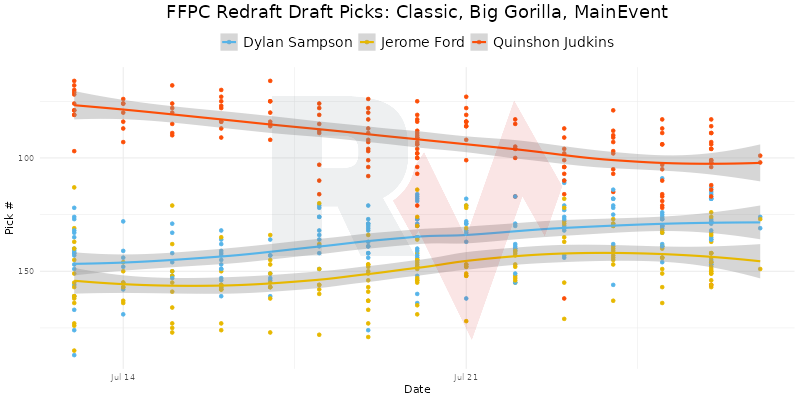Corbin examines the drafting backward strategy and historical draft data to identify players to target. His top sleepers at every position for 2025 fantasy football.
In fantasy baseball, one strategy involves drafting backward or building your draft from the back. So what does that mean? Essentially, it's an attempt to find players who could provide similar production.
Our goal is to find players with similar skills to those of a player who is selected earlier in drafts. Name value, recent successes or struggles, and uncertainties will cause a player's average draft position (ADP) to shift.
We want to identify players who could be big hits, yet might be small misses at their given price. This strategy can be applied to all league formats, where we identify player archetypes and skill sets to narrow down your player targets.
Be sure to check all of our fantasy football rankings for 2025:- 2025 fantasy football rankings
- Running back (RB) rankings
- Wide receiver (WR) rankings
- Quarterback (QB) rankings
- Tight end (TE) rankings
- Defense (D/ST) rankings
- Kicker (K) rankings
- FLEX rankings
- Dynasty rankings
Draft Strategy - Drafting Backward
Like anything market-related, we want to find cheaper options that provide similar or better value. That's the case with fantasy football. That process involves examining the player pool to identify values and mispriced players throughout the draft. Depending on the format, we'll have wide receivers, running backs, or tight ends pushed up in the draft. For instance, we typically have a handful of running backs with high-end rushing and receiving usage going earlier in drafts.
When we cut up drafts in rounds of 4-5, we can see pockets of players going in certain areas of the draft. Using the RotoViz Best Ball Win Rate Explorer, we can examine the position heat map to find values and players who contribute to winning leagues in the Fantasy Football Players Championship (FFPC) ADP. Let's start with the running back position from 2021 to 2024.
The visual below shows the running back win rates by draft position from 2021 to 2024.
Over the past few seasons, running back win rates were the highest in the second round, with Rounds 4-5 being brutal for the position. Meanwhile, several running backs were hits in the double-digit rounds, aligning with the ZeroRB approach. When we filter the heat maps by the past two seasons, we notice the dead zone isn't quite as "dead" in Rounds 3-6.
The visual below shows the running back win rates by draft position from 2023 to 2024.
Drafting from the backend of the draft over the past few seasons has been fruitful in having wide receivers on winning teams. Since most leagues tend to push up receivers, especially in best ball, we see the receiver win rates drying up past Round 12 or so compared to earlier in the draft. Unlike running backs, we don't often see receivers benefit from chaos and uncertainty, especially when they're drafted later. For instance, if the top receiver on a team misses time, there typically isn't one receiver who fills in to take on a similar role. Sometimes those targets go to other players, without one beneficiary.
The visual below shows the wide receiver win rates by draft position from 2021 to 2024.
Meanwhile, wide receivers have helped win leagues at a higher rate when they're drafted earlier, aligning with the recent market for the position. The ADP market is sharper as drafters adjust strategies and understand ways to win. There have been a few hits in the middle rounds in Rounds 8-10 at the receiver position. The data from 2021 to 2024 looks similar when we filter down to the past two seasons.
The visual below shows the wide receiver win rates by draft position from 2023 to 2024.
For context, keep in mind that FFPC leagues have a tight end premium scoring, meaning they do 1.5 points per reception for the position. That tracks with tight ends helping to win leagues as first-round picks over the past few seasons. However, we would guess several of those might be Travis Kelce. Besides the first-round tight-end win rates, there were several hits in Rounds 3-5.
The visual below shows the tight end win rates by draft position from 2021 to 2024.
The past two seasons have been a bit more sporadic, showing the later-round tight ends helped win leagues, specifically in Rounds 10 and beyond. That could hint at the market shifting toward the data and adjusting draft strategies based on the positional costs. Keep that in mind because if drafters in tight end premium scoring have been waiting on the position, maybe we should do the same in other league formats. Thankfully, there have been several discounted players at the position after being highly priced in the past.
The visual below shows the tight end win rates by draft position from 2023 to 2024.
We'll close it out with quarterbacks. From 2021 to 2024, quarterbacks have been winning leagues when drafted in the earlier to middle rounds. That's partly because drafters have been understanding the elite value for rushing quarterbacks like Lamar Jackson, Josh Allen, and Jalen Hurts, who provide week-winning performances. Meanwhile, the quarterback win rates tend to be more sporadic later in the drafts, especially with the market adjustments.
The visual below shows the quarterback win rates by draft position from 2021 to 2024.
Over the past two seasons, we've seen fantasy managers win with quarterbacks in the early rounds. Then, there's a gap where drafters have been prioritizing other positions before hitting on quarterbacks in the middle to late rounds. Jayden Daniels, Baker Mayfield, and Jared Goff, among others, come to mind over the past two seasons.
The visual below shows the quarterback win rates by draft position from 2023 to 2024.
Examining the league-wide data should help to identify players to target based on their positions. If we find positions and players to hit later in drafts, it will provide value and production, like those earlier in the drafts.
Later Quarterback Targets
Bo Nix, QB, Denver Broncos
FFPC ADP: 105.2, QB8
After a breakout rookie season, Nix ranked ninth in expected fantasy points per game (EP/G). Nix showed the rushing ability in college, but impressed us with his passing numbers. He sneakily averaged the ninth-most rushing EP/G among quarterbacks who played five games or more.
That gives him a floor and ceiling if he maintains his passing efficiency. Nix ranked 22nd in completion rate over expected and 21st in adjusted completion percentage among 47 qualified quarterbacks with 100 dropbacks. He avoided sacks when pressured, evidenced by the 10th-best pressure-to-sack rate in 2024. Interestingly, the Broncos ranked last in pass rate over expected in 2024. That indicates they preferred to lean on the run game. That could be a product of the offense being cautious with a rookie quarterback.
Nix has been valued fairly, but the market hasn't been pushing him up in drafts, making him a solid middle-round pick to target if we miss one of either Mayfield, Dak Prescott, or Kyler Murray.
Dak Prescott, QB, Dallas Cowboys
FFPC ADP: 117.7, QB10
Prescott suffered a significant hamstring injury in November, causing him to miss the rest of the season. He attempted the third-most pass attempts per game (35) over the past two seasons, behind Joe Burrow (37.7) and Patrick Mahomes (36.8). Interestingly, the Cowboys were 24th in pass rate over expected in Weeks 1-9 with Prescott healthy.
That indicates the Cowboys preferred to lean on the run game last season, especially when considering the team ranked 26th in pass rate over expected in 2025. However, the rushing focus could be related to Prescott's injury and some skill player changes, like relying on Rico Dowdle.
The team acquired George Pickens via trade, with minimal investments in their running backs, signaling they want to pass. In Brian Schottenheimer's first season as the Cowboys' Offensive Coordinator in 2023, they ranked fourth in neutral game script pass rate behind the Commanders, Bengals, and Vikings. Look for Prescott to garner the passing volume with improved efficiency.
Summary
The team invested in a first-round center in 2025, with a sixth-round right tackle, and some additional offensive line depth pieces. They have been looking to shore up their offensive line. They allowed the third-lowest pressure rate, ahead of the Broncos and Buccaneers, which should be a fruitful combination for Prescott, given the passing volume and additional weapon in Pickens. This feels like a year to wait on quarterback if we miss out on the top 3-4 options in this juicy pocket with Mayfield (even with regression), Nix, Murray, Prescott, and Brock Purdy.
Later Round Running Back Draft Targets
Bhayshul Tuten, RB, Jacksonville Jaguars
FFPC ADP: 116.6, RB41
There will be fantasy value in the Jaguars' backfield, especially due to the uncertainty, which is causing some to lean into or fade the team. Even at RB31, Travis Etienne might be slightly overvalued going inside the top 100 picks. Tuten was one of the most explosive running backs in the 2025 class. He boasted elite Speed, Freak, and Explosion Scores, ranking in the 96th percentile or higher.
He had the highest Running Back Dominator (81 percent) and the third-best receiving yardage market share (10 percent) in his career. Besides being productive, Tuten created yards by missing tackles on 36.3 percent of his attempts, ranking third in the class. Furthermore, Tuten's explosive athleticism was evident. He rocked the fifth-highest explosive rush rate, meaning 46.6 percent of his carries went for 15 yards or more.
Tank Bigsby seems to be picking up steam and going later, though he doesn't have the explosiveness or receiving profile like Tuten. Bigsby has one career game with three targets or more. In 93.5 percent of Bigsby's games, he had one or zero targets. Sure, that could change, but the best-case scenario involves Bigsby taking on the early-down attempts and goal-line opportunities.
Summary
Tuten has multiple paths to a big hit in fantasy value, given his explosive rushing and potential to garner targets in the receiving game. If Etienne misses time, Tuten should be the priority over Bigsby for targets based on the past usage. Take the discounted price on Tuten while you can, because there are tons to like in Tuten's underlying metrics. It's a low-risk, high-reward type of move.
Jerome Ford, RB, Cleveland Browns
Dylan Sampson, RB, Cleveland Browns
Sampson's FFPC ADP: 135.6, RB50
Ford's FFPC ADP: 148.3, RB54
Even before the Quinshon Judkins news, Sampson and Ford were probably undervalued. However, we could argue the market wasn't pushing Browns' running backs up the board because the team ranked last in expected points added (EPA) per dropback while ranking 27th in EPA per rush attempt.
We've seen the ADP for Judkins fall by nearly 30 picks since the news of his arrest. Meanwhile, Ford (+42) and Sampson (+30) saw significant bumps in their ADP. That's unsurprising, but there might be sneaky value for Ford and Sampson. Ford handled most of the team's workload when covering for Nick Chubb's injury over the past two seasons.
Ford had a 58 percent snap share, 37 percent team rush percentage, and a 12 percent target share in 2024. That's nearly identical to his usage in 2023, with 52 percent of the snaps, 39 percent rush share, and 11 percent target percentage. Ford might be the early-season back to target, especially if Judkins misses time. Though Ford might seem boring, he posted an above-average missed tackles forced rate (18 percent) in 2024, down from 25 percent in 2023.
Sampson was productive in his final season, with a 73 percent RB Dominator and five percent receiving yardage market share. He generated a missed tackle on 27.1 percent of his rush attempts in 2024, ranking 10th in the 2025 class. He didn't participate in the running events at the NFL Combine, but Sampson profiles as having above-average athleticism, something we look for at the position.
Summary
The draft market moved Sampson over Ford in ADP by over 10 picks. Ford and Sampson remain undervalued, especially since the Browns ranked 11th in adjusted yards before contact per attempt. However, they ranked 10th in pass rate over expectation, suggesting they may lean more on the pass game. Besides Jerry Jeudy and David Njoku, the Browns lack offensive weapons, so expect Ford and Sampson to be contributors at a discounted price. If anything, they should be closer to around pick 100.
Later Round Wide Receiver Draft Target
Luther Burden III, WR, Chicago Bears
FFPC ADP: 133.8, WR55
Why do Matthew Golden and Emeka Egbuka go near pick 100, yet Burden's ADP is around 130? Golden and Egbuka have murky paths to garnering targets on their respective teams. That's the case with Burden, too, though maybe it's a muddier hill to climb, or is it? I wrote about Burden earlier in the off-season as a rookie breakout candidate.
The visual below shows the receiver prospects sorted by slot percentage in 2024.
Burden could take over the slot role that Keenan Allen held last season since Burden played in the slot over 80 percent of the time in 2023 and 2024 in college. He generated manufactured targets in college, with 25 percent of his targets coming in the short area and behind the line of scrimmage. Burden was a tackle-breaking machine because he forced a missed tackle on nearly half of his receptions (49.2 percent).
Before having a down season last year, Burden was one of the top receiver prospects heading into his final college season. There's that Deebo Samuel Sr., Jayden Reed, and Amon-Ra St. Brown-type profile in Burden's range of outcomes.
Summary
We'll want to bet on Burden, the cheaper receiver on the Bears, especially since Rome Odunze feels overpriced based on the Year 1 production. However, we could blame Caleb Williams and his off-target throws to Odunze as part of the problem. Prioritize Burden in the middle rounds because there could be multiple paths to upside at the discounted price. It could take patience because we've seen rookie receivers produce well as the season progresses.
Later Round Tight End Draft Target
Tyler Warren, TE, Indianapolis Colts
FFPC ADP: 91, TE10
Warren had a historic final season in college, with 104 receptions and 1,233 receiving yards, translating to a Receiving Dominator at 30 percent. Since 2005, Warren was one of 12 pass catchers with 100 receptions in a season. Some of it was volume-related since Penn State played deep into the College Football Playoff. A fellow tight end from the 2025 class, Harold Fannin Jr., also had over 100 receptions in 2024.
It's rare for tight ends to have this type of elite draft capital as a first-round pick. Some of Warren's top comparisons were drafted inside the top 15 picks in their respective NFL Drafts, including Eric Ebron, T.J. Hockenson, and Brock Bowers. Most of Warren's top comparisons have been high-end fantasy producers at the position for a few seasons.
One could argue that Warren struggled to produce until his final collegiate season. However, we rarely see tight ends post these types of numbers as a rusher and receiver. Warren should be an offensive weapon for the Colts because he ran routes 47.3 percent of the time in the slot while also being deployed as a wildcat quarterback since he played the position in high school.
Warren had the second-highest receiving yards per team pass attempt among the 2025 tight end class behind Fannin. He generated 6.7 yards after the catch per reception while winning against man and zone coverages. That's evident in Warren's 3.53 yards per route run against man and 2.66 versus zone.
Summary
With Daniel Jones opening the season as their QB1, the entire passing offense should have a higher ceiling. Besides Jonathan Taylor, the rest of the Colts' pass catchers went at pick 90 and beyond. After Bowers, Trey McBride, and George Kittle, there are some question marks with the following handful of tight ends. Warren has a palatable price as TE10, so take the discount and reap the rewards.
There are multiple paths for Warren's upside as a receiver, potentially being the second-best target earner while also providing some potential rushing, like a more talented version of Taysom Hill.
More Fantasy Football Analysis
Download Our Free News & Alerts Mobile App
Like what you see? Download our updated fantasy football app for iPhone and Android with 24x7 player news, injury alerts, rankings, starts/sits & more. All free!






 RADIO
RADIO








